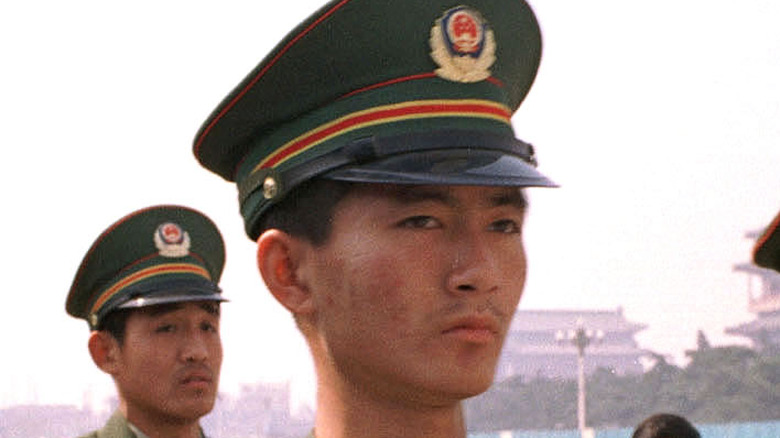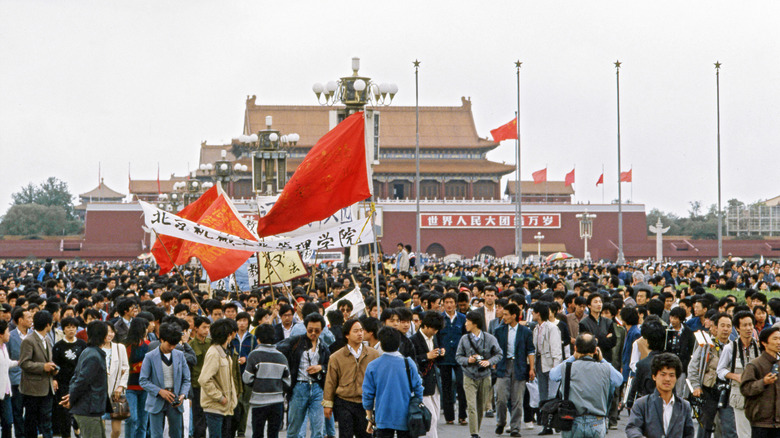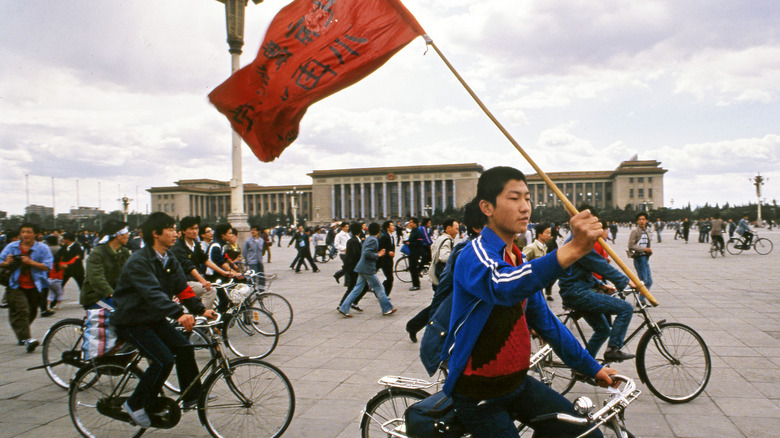Here's Why The Tiananmen Square Protests Really Started
The Tiananmen Square protests in Beijing were a number of student-led demonstrations that took place between April 15 and June 4, 1989. Known in China as "the June Fourth Incident," the protests started peacefully but ended in bloodshed. By May 20, the Chinese government had declared martial law, and on June 4, approaching army tanks and troops carrying assault rifles started firing — first just warning shots into the air, and then directly into the crowds (per History).
The exact death toll of the Tiananmen Square massacre is impossible to determine, as the Chinese government has never released official numbers. According to History, at least 300 protesters, but possibly thousands, were killed that day. Thousands were also arrested and many remained detained for years. By June 5, the square was empty and the military had regained control over the area.
The protests started in April for a number of reasons, but the stage for them was actually set years before 1989. By the early 1980s, Chinese revolutionary and statesman Deng Xiaoping had already set the course for market-economy reforms, including a bigger emphasis on commercialism, as explained by ThoughtCo. Xiaoping's philosophy of "economic prosperity is good" led to more productivity and allowed farmers, workers, and even the press to express their discontent with many current issues. Over time, students started debating politics on campuses, and the idea of fighting against oppression became a growing force.
The mourning turned to protest as the crowds got bigger
By 1989, more and more young students were pushing for political and economic reform, as well as some measure of individual freedoms. According to Britannica, this, in turn, led to more pressure by the government to suppress change, with raising tension coming to a boiling point when pro-reform general secretary Hu Yaobang died in 1989.
Yaobang's death prompted demonstrators to gather in Beijing's Tiananmen Square. First simply to mourn the passing of someone who was a symbol of reform and change, but eventually to protest against political restrictions and corruption (via EuroNews). As the number of demonstrators increased, so did the causes they were protesting against: lack of freedom of speech, inflation, economical sanctions.
By May, demonstrators were organizing hunger strikes and attracting protesters from other cities. Tiananmen Square ended up attracting over one million demonstrators even before the protests spread to other cities around the country (per EuroNews).
Another big underlying issue fueling the protests was corruption. Young university students in particular were deeply aware of the corrupt system within the Communist Party, which was taking advantage of the economic boom to allow the rich to deal with foreign companies and become richer, while the general population was locked outside of the system and being denied access to the market (per ThoughtCo).
The protests were about politics, but also about freedom
The focus on commercialism had created a growing gap between the rich and the poor, which History points out was worsening due to a lack of jobs. This in turn was fueled by an educational system that didn't prepare citizens for the new capitalist free market that was becoming the standard.
Then there was the issue of the sky-high inflation, which, according to ThoughtCo, reached 28% at one point. To ease the pressure on the government, laborers were being paid with IOUs, a type of document recording a debt that of course has no value to buy items or pay things like rent. As a result, the poor just kept getting poorer.
For students, what started as mourning turned into a strong demand for democratic reform as the days of the protest progressed. As National Geographic points out, students demanded freedom of the press and the right to assemble as part of their essential rights. Over 30 years after the Tiananmen Square protests, China still relies on censorship to control the media and the information journalists can share (per Council on Foreign Relations).


